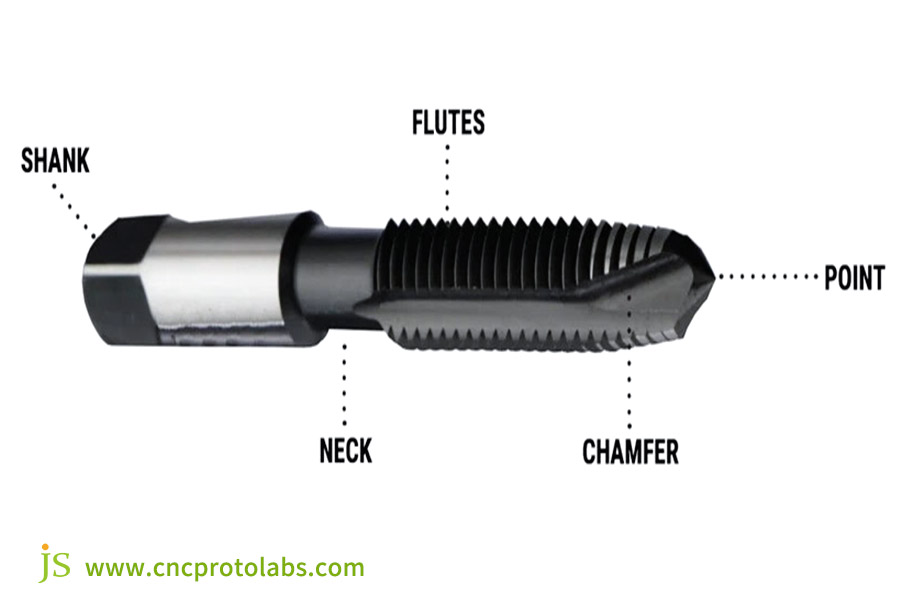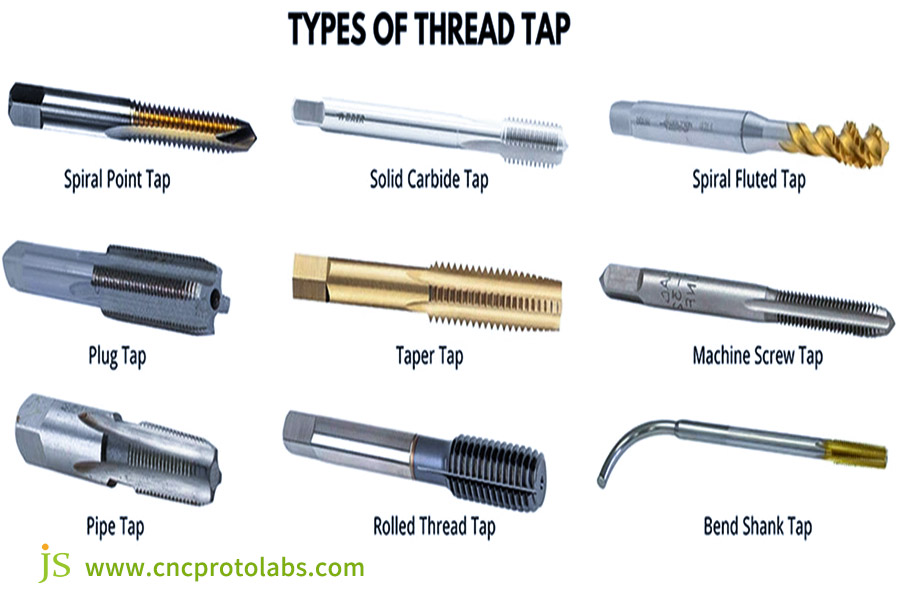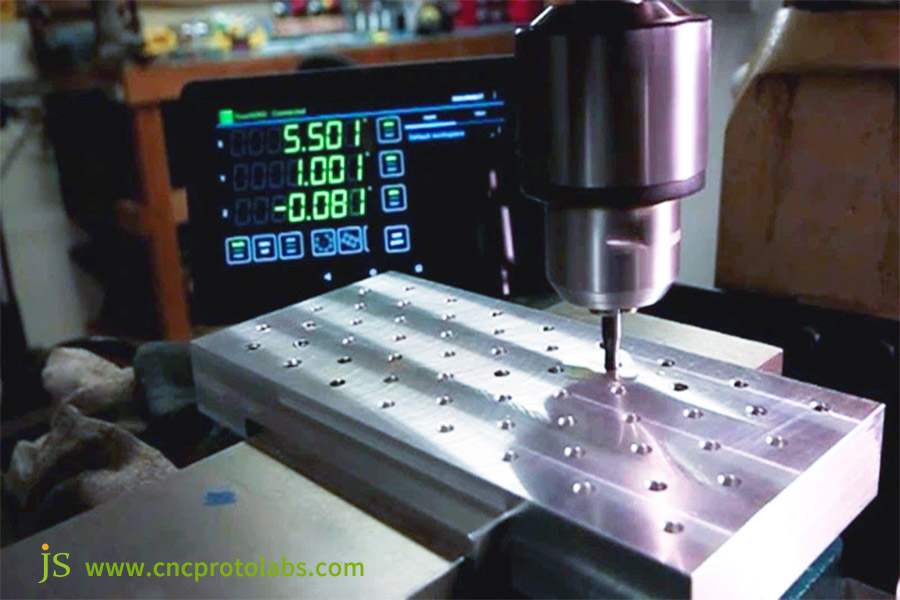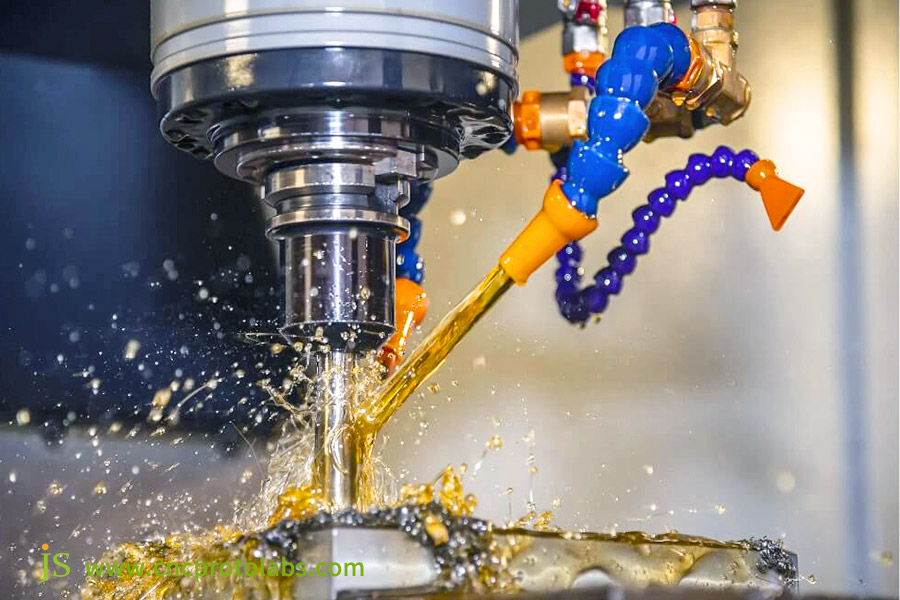A broken tap will idle a production line for hours,and a rough thread will cause essential parts to fail.Internal thread tapping may seem simple,but it is the most neglected task in precision manufacturing.Does recurrent tap edge chipping and insufficient thread accuracy bother you?
This article will comprehensively review the fundamental types of thread taps and demonstrate how you can minimize risks and achieve zero-defect internal threads with the help of professional CNC services!
Core Answer Summary
| Aspect | Core Content |
| Tap components | Contains 5 major components, the handle is used for clamping and fixing, and the working part is responsible for cutting |
| Tap type | Divided into 5 categories, straight groove taps have strong universality, spiral groove taps are suitable for deep hole machining, and spiral point taps have high efficiency |
| Tapping steps | Divided into four steps, drilling should match the thread specifications, chamfering can prevent blade breakage, threading speed needs to be controlled, and cleaning can ensure thread cleanliness |
| Model selection | Four dimensional considerations from workpiece materials, thread parameters, processing equipment, and precision requirements |
| Cutting oil action | Cooling and cooling, lubrication and friction reduction, rust and corrosion prevention, cleaning and chip removal, extending tool life |
| The Law of Extending Life | Choose appropriate cutting parameters, standardize operation and maintenance, match suitable materials, and extend the life of the tap |
Why Is This Guide Worth Reading?JS Team Reveals
JS is rich in experience for CNC machining with thread tapping.We know the right tapping diameter settings for different materials and can precisely adjust parameters such as machine speed and feed rate,optimize tapping using cutting oils/fluids,and regularly inspect tap condition for accuracy.
We've been utilizing advanced CNC machinery and technology to manufacture tapping needs for materials such as plastics and metals for years now,serving a wide range of industries and holding component tolerances of 0.005mm.This no-nonsense and reliable guidebook is a by-product of this real-world experience,allowing you to gain a complete understanding of thread taps.
JS understands the tricks of taps for cutting threads,having years of experience and expertise.We provide you with online CNC machining services,fast quotes,and turn your designs into quality components.It's easy and reliable to use us.
Thread Taps: 5 Main Components You Can't Ignore
The performance and function of a thread tap are determined by its various main components,so it's extremely important to know these components for the proper selection and use of taps.
- Shank: The shank is that part of the tap which is held by the tool.The shank shape and size need to match the tool for secure torque transmission during tapping,to avoid tap slipping,and to ensure a smooth tapping operation.
- Neck: The neck,which divides the shank from the working part,provides space for the production and operation of the tap.For example,when grinding the working part of a tap,the neck holds the shank free from interference by the grinding wheel.
- Working part: It is the principal part of the tap that performs the actual tapping operation and consists of a cutting section and a leveling section.The cutting section performs the actual cutting operation,while the leveling section straightens the cut threads to maintain thread quality and accuracy.
- Cutting edge: The cutting edge is the working part edge that actually cuts the metal.Its sharpness and geometry directly affect cutting efficiency and thread surface finish.A sharp cutting edge reduces cutting resistance,with less labor required for tapping.
- Chip flutes: Tap operation involves generation of lots of chips.These chips are accommodated in the chip flutes so that they won't get trapped in the threaded hole,thereby affecting thread quality and tap life.The number and shape of chip flutes vary for different types of taps.
JS is well aware of the key components of thread taps,and our taps for cutting threads are trustworthy.In custom CNC machining manufacturing, we pay attention to every detail and ensure accuracy,We quote fast and supply precision parts to precise specifications.

Five Kinds Of Thread Taps: Helping You Tap More Efficiently
There exist several kinds of thread taps,which suit different processing conditions and materials.The right one can significantly improve tapping efficiency and quality.
- Hand taps: They are primarily for manual tapping operations and are usually offered in sets,including coarse,medium,and fine thread pitches.They have a longer cutting portion and a shank that typically lacks a square tenon,making them easy to turn by hand.Hand taps are suitable for tapping holes with low precision and small batch quantities.
- Machine taps: Used in tapping threads on machine tools,and are typically machine-driven.Machine taps have a short cutting end and a square tenon shank,and can thus be fitted onto the machine tool using a chuck.They can be utilized in mass production and they have high processing efficiency.
- Pipe thread taps: They are designed to tap pipe threads,which exist in different sizes depending on the type of thread being tapped(cylindrical or tapered).The tooth size and profile of pipe thread taps conform to the respective pipe thread standards so as to create a leak-tight and safe connection.
- Spiral flute taps: Their spiral flutes are chip in structure,and chips are pushed out through the spiral flutes.This tap is ideal for tapping blind hole threads because the spiral flutes force chips upward,not allowing chips to fall at the bottom of the hole and hinder the process.They can also be employed to tap hard metals such as copper and aluminum.
- Extrusion taps: Plastically deform the material to form threads,thus eliminating chip generation.Can be utilized for the processing of plastic materials,such as aluminum alloys and copper alloys.The resulting threads are strong and of good surface quality,but there should be sufficient plasticity in the material.
| Tap Type | Applicable Processing Method | Applicable Materials | Features |
| Hand Taps | Hand operation | Convenient for general use on a wide variety of materials,low accuracy demands | Long cutting part,supplied in set |
| Machine Taps | Tool-room machine operation | Convenient for general use on a wide variety of materials,mass production | Short cutting part,high output |
| Pipe Thread Taps | Machine or hand operation | Convenient for pipe materials | Complies with pipe thread specifications and offers tightness |
| Spiral Flute Taps | Operation of machine tools | Specially designed for hard material and blind holes | Spiral flute chip removal,which is best for blind holes |
| Extrusion Taps | Operation of machine tools | Specially designed for high plasticity materials | Chip-free,with high thread strength |
JS specializes in all categories of taps for cutting thread.Whatever you need,we can match it,provide effective processing,and provide rapid quotes so that tapping can be done quickly and with high quality.

Four-Step Internal Thread Tapping Procedure: Hole To Ideal Thread
Internal thread tapping requires a specific procedure,each having its own key points.Strict following ensures an able thread.
Drilling:
Before tapping,a pilot hole should be drilled.Pilot hole diameter should be determined based on the thread details and material.If the pilot hole size is too small,the cutting resistance of the tap will be too high,and this may cause it to break.If the pilot hole size is too large,the thread profile will be insufficient,and this will influence the strength of the connection.
The pilot hole size may usually be calculated from the nominal thread diameter and pitch by using a formula or looking up corresponding tables.
Chamfering:
Chamfering the entrance to the pilot hole allows for smooth entry of the tap into work and avoids burrs in the mouth of the hole that may scratch the tap upon tapping or degrade the surface quality of the thread.The diameter of the chamfer is typically 0.2-0.5 times the nominal diameter of the thread.
Tapping:
Hold the tap with an appropriate tool(a tap wrench for hand tapping,a machine chuck for machine tapping)and slowly insert the tap into the bottom hole.Hold the tap at an angle to the workpiece while tapping and use even torque.
Material and type of tap determine tapping speed.Generally speaking,faster speeds are appropriate for hard materials and slower speeds for softer materials.Also,turn the tap periodically while tapping to allow the chips to be removed.
Cleaning:
Clean away chips and oil from the tapped threaded hole after tapping.Chips can be brushed or blown out with compressed air and cleaned with a cleaning agent such as kerosene or diesel in order to obtain a good quality thread connection.
Regarding tapping, JS's taps for cutting threads are more professional, and our online CNC machining services can ensure quality at every step of the project.
Four-Dimensional Decision Model For Thread Tap Selection
Choosing the proper thread tap means you have to consider many things.The below given four-dimensional decision model can help you make the right choice.
Material Factors:
The properties of the material to be machined have a bearing on the selection.For plastic materials,which tend to produce continuous chips when machining,spiral-fluted taps or extruded taps are ideal.
For brittle materials,which tend to produce fragmented chips when machining,straight-fluted taps are preferred.In addition,the material's hardness also influences the selection of tap.Harder materials require taps made of wear-resistant material,e.g.,high-speed steel or carbide.
Thread parameters:
Thread parameters such as nominal diameter,pitch,thread profile(e.g.,triangular,rectangular,trapezoidal),and precision grade directly determine tap specifications.Taps matching the thread parameters must be selected on the grounds of design requirements so that the resulting threads are compatible with connection or mating requirements.
Processing conditions:
Processing conditions include processing equipment(manual,lathe,drilling machine,machining center,etc.),processing method(through hole or blind hole),and production batch size.
For mass machining on a machine tool,machine taps are to be selected to improve production efficiency.For manual machining or small-lot production,hand taps can be used.Spiral-fluted taps are better for blind holes,and straight-fluted taps or spiral-point taps for through holes.
Precision requirements:
Different applications require different thread precision.When the thread is used for precision fitting or important joints,a high-precision tap,e.g.,H2 or H3,is required.For general-purpose threads,an ordinary-precision tap(e.g.,H4 or H5)is sufficient.The tap's precision grade is primarily represented by the pitch diameter tolerance of the thread.The tolerance range decreases with the improvement in precision.
The following table summarizes the important points of a four-dimensional decision:
| Decision Dimension | Key Factor | Selection Important Points |
| Material Factors | Plasticity/Brittleness,Hardness | For plasticity,use spiral flute or extrusion taps,for brittleness,use straight flute taps,for high hardness,use taps made of wear-resistant materials. |
| Thread Parameters | Diameter,Pitch,Thread Profile,Accuracy Grade | Match thread specifications |
| Processing Conditions | Equipment,Through/Blind Holes,Batch Production | Use machine taps for batch production,spiral flute taps for blind holes,straight flute or spiral point taps for through holes. |
| Precision Requirements | Precision Fit/General Application | Choose H2 or H3 for precision,H4 or H5 for general application. |
Choosing the right tapes for cutting threads is not difficult, JS has a four-dimensional model. In custom CNC machining manufacturing, we can accurately match your needs, efficiently and economically.

The Underrated Secret Of Success: The Five Major Functions Of Cutting Oil/Fluid
Cutting oil/fluid might be an underrated element in the thread tapping process,yet a significantly crucial one.
Cooling:
During tapping,a lot of heat is produced due to friction between the workpiece and the tap.The cutting fluid/oil absorbs and dissipates the heat,lowering the temperature of the workpiece and the tap,thereby preventing the tap from softening because of overheating and also keeping the workpiece from deforming due to excessive temperatures.
Lubricating:
The cutting oil/fluid forms a film of lubricant between the tap's cutting edge and the workpiece,reducing the coefficient of friction between them and minimizing cutting resistance,thereby enabling smoother tapping and minimizing tap wear.
Chip evacuation:
The flow of cutting oil/fluid washes chips away from the cutting area,preventing their settling in the chip flutes or threaded hole,where they can scratch the machined thread surface.It also prevents chip blockage and tap breakage.
Improvement in Surface Quality:
Proper cutting oil/fluid reduces cutting friction and vibration,resulting in a smoother thread surface and improved surface roughness,and hence improved thread fit and service life.
Prevention of Rust:
Cutting oils/fluids usually contain rust-inhibiting additives that form a protective film on the workpiece and tap surfaces,preventing rust during and immediately after machining,thereby protecting workpiece quality and tap life.
Cutting oil makes taps for cutting threads more awesome,while JS makes your CNC machining parts processing project more awesome.

Engineers Need To Know: 3 Golden Rules To Extend Tap Life
Extending tap life not only reduces production expenses but also ensures consistent machining quality.The following three principles are worth the attention of engineers.
Rational Selection of Cutting Parameters:
Cutting speed,feed rate,and cutting depth are significant cutting parameters that affect tap life.Too high a cutting speed will cause the tap temperature to rise rapidly,accelerating wear,too high a feed rate will increase cutting forces,resulting in overloading and breakage.
Therefore,one has to select appropriate cutting parameters based on the material being worked on,tap type,and precision needed.Generally,for harder materials,lower cutting speeds and reduced feed rates have to be used.
Proper Use and Maintenance:
- Inspect the tap before use for integrity and to ensure the cutting edge is sharp and free from chipping and wear.
- When clamping the tap,ensure that it is perpendicular to the workpiece to avoid damaging it due to uneven pressure on the tap from sloppy clamping.
- Employ a steady feed when tapping and avoid abrupt acceleration or deceleration.
- Clean the tap right away after use of chips and oil,apply proper lubrication and rust protection,and store in a dry well-ventilated area.
Selection of Proper Tap Material:
A tap material's properties have a direct impact on its life.
High-speed steel taps are high in toughness and wear resistance and are suitable for machining common materials.Carbide taps are high in hardness and with good wear resistance but with less toughness and are suitable for machining materials with greater hardness such as hardened steel and cast iron.
When selecting a tap material,consider the machined material properties and process requirements to maximize the tap's performance and extend its life.
Want to make taps for cutting threads more durable?JS has the solution.Enhance lifespan,reduce costs,and get quotations quickly.We are committed to serving your machining needs.
Case Study: Thread Failure In a Hydraulic Cylinder End Cap Of Mining Machinery
Customer Pain Point
A producer of mining machinery experienced catastrophic failure in machining M48×4 deep-through hole threads in a hydraulic cylinder end cap of 42CrMo quenched and tempered steel(HRC 32-35)under 300 bar high pressure.A standard tap chipped after machining an average of three threads,and magnetic particle inspection revealed 100% microcracks in the thread root.This resulted in a hydraulic test leakage rate as high as 35%.
JS’s Solution
The tooling was switched to a PM-HSSE extrusion tap to eliminate cutting stress,and the pre-formed hole diameter was increased from Ø44.1mm to Ø44.3mm to compensate for material springback.
A high-viscosity extreme-pressure oil-based lubricant was used to double the penetration,and the spindle speed was reduced from 95 RPM to 45 RPM to reduce torque by 40%.
Final Results
Tap life went up from 3 to 150,thread microcracks went down from 100% to 0%,hydraulic leakage rates dropped from 35% to 0.2%,and cost per piece of processing decreased by 62%.
This case study demonstrates that JS's taps for cutting thread are amazingly effective.Problem-solving,cost-saving,and quick quoting—we can meet your machining challenges.
FAQs
Q1: Why do taps always break in blind holes?
90% due to poor chip removal! Force the use of spiral groove taps (right-handed grooves) and control the hole depth to be ≤ 3 times the diameter.
Q2: Do extrusion taps really not require chip removal?
Correct! But it is necessary to ensure:
① Material elongation rate>10% ② Prefabricated aperture accuracy ± 0.03mm ③ Aperture chamfer ≥ 0.5 × pitch.
Q3: How does JS solve the problem of titanium alloy tapping and sticking knives?
Triple solution: ① Physical Vapor Deposition (PVD) TiAlN coated tap ② High permeability chlorine containing cutting oil ③ Segmented tapping per hole+ultrasonic cleaning.
Summary
Threads are the lifeblood of mechanical joints,and a single tapping error can be disastrous.The next time you're modeling a threaded part,remember: tap selection is science and parameter optimization is experience.
We provide comprehensive online CNC machining services to meet your various needs in CNC machining parts processing.Upload your CAD file now to experience our intelligent thread tapping solution—get a DFM report and exact quote in 30 seconds.Our engineers will ensure that you achieve perfect threads with zero chipping,zero burrs,and 100% compliance!
Disclaimer
The contents of this page are for informational purposes only.JS servicesThere are no representations or warranties, express or implied, as to the accuracy, completeness or validity of the information. It should not be inferred that a third-party supplier or manufacturer will provide performance parameters, geometric tolerances, specific design characteristics, material quality and type or workmanship through the Jusheng Network. It's the buyer's responsibilityRequire parts quotationIdentify specific requirements for these sections.Please contact us for more information.
JS Team
JS is an industry-leading companyFocus on custom manufacturing solutions. We have over 20 years of experience with over 5,000 customers, and we focus on high precisionCNC machining,Sheet metal manufacturing,3D printing,Injection molding,Metal stamping,and other one-stop manufacturing services.
Our factory is equipped with over 100 state-of-the-art 5-axis machining centers, ISO 9001:2015 certified. We provide fast, efficient and high-quality manufacturing solutions to customers in more than 150 countries around the world. Whether it is small volume production or large-scale customization, we can meet your needs with the fastest delivery within 24 hours. chooseJS TechnologyThis means selection efficiency, quality and professionalism.
To learn more, visit our website:www.cncprotolabs.com







